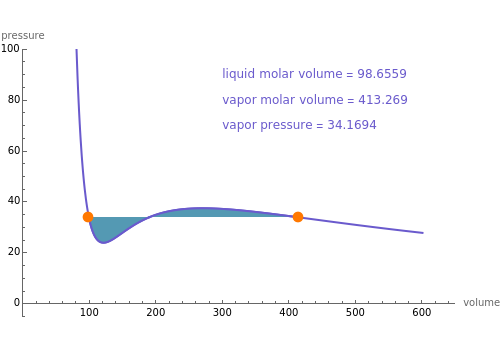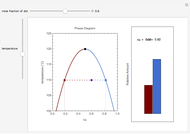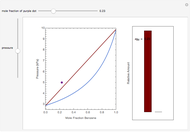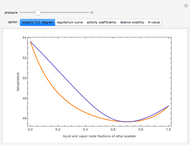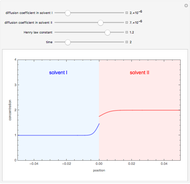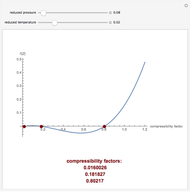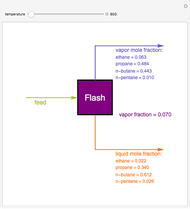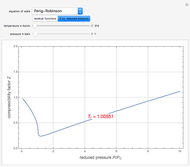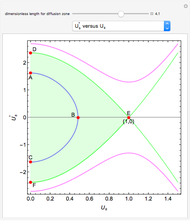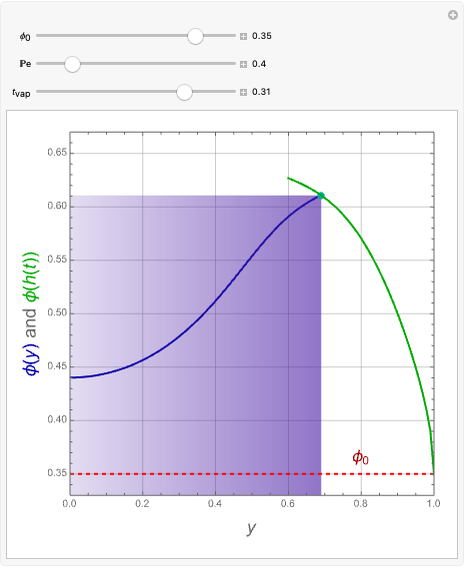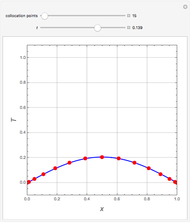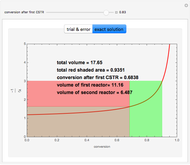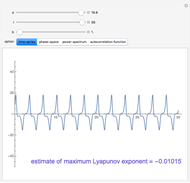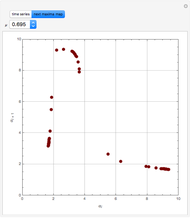Applying the Soave-Redlich-Kwong Equation of State

Requires a Wolfram Notebook System
Interact on desktop, mobile and cloud with the free Wolfram Player or other Wolfram Language products.
The Soave-Redlich-Kwong single equation of state can accurately describe both the liquid and vapor phase. This Demonstration applies this equation of state to estimate several properties of ethane and plots isotherms for various values of the temperature varying from 274.15 K to 303.15 K. The liquid and gas molar volumes (in  ) as well as the vapor pressure (in bar) of ethane at the selected temperature (in K) are obtained using the equal area rule (i.e., both shaded areas must be equal). The
) as well as the vapor pressure (in bar) of ethane at the selected temperature (in K) are obtained using the equal area rule (i.e., both shaded areas must be equal). The  coordinates of the two orange dots correspond to liquid and gas molar volumes while the
coordinates of the two orange dots correspond to liquid and gas molar volumes while the  coordinate is the vapor pressure. The behavior of the isotherm between these two points is not physically realizable. It is a portion of the isotherm where the specific volume will vary continuously at a fixed temperature and pressure; this is the two-phase coexistence region. This behavior is not peculiar to the Soave-Redlich-Kwong equation of state; indeed many other equations of state show this behavior.
coordinate is the vapor pressure. The behavior of the isotherm between these two points is not physically realizable. It is a portion of the isotherm where the specific volume will vary continuously at a fixed temperature and pressure; this is the two-phase coexistence region. This behavior is not peculiar to the Soave-Redlich-Kwong equation of state; indeed many other equations of state show this behavior.
Contributed by: Housam Binous (March 2011)
Open content licensed under CC BY-NC-SA
Snapshots
Details
The Soave-Redlich-Kwong equation of state [1-3] is given by
 ,
,
where  ,
,  ,
,
 and
and  .
.
Ethane’s critical temperature and pressure and acentric factor [2] are:  ,
,  , and
, and  .
.
References:
[1] J. M. Prausnitz, R. N. Lichtenthaler and E. G. de Azevedo, Molecular Thermodynamics of Fluid-Phase Equilibria, 3rd ed., Upper Saddle River, NJ: Prentice Hall, 1999. [2] S. I. Sandler, Chemical and Engineering Thermodynamics, 3rd ed., New York: Wiley, 1999. [3] J. W. Tester and M. Modell, Thermodynamics and Its Applications, 3rd ed., Upper Saddle River, NJ: Prentice Hall, 1996.
Permanent Citation
